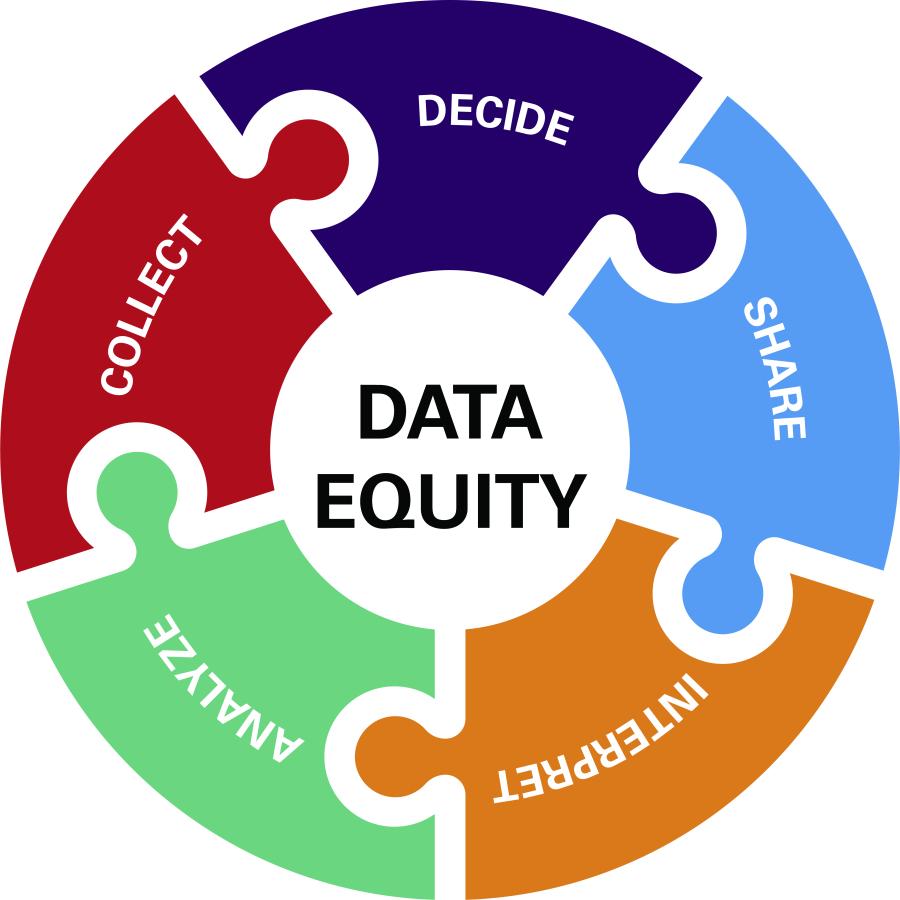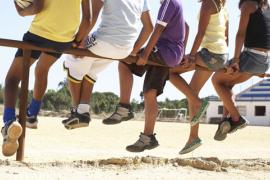Whenever we’re brought on board to support a camp in creating a greater sense of inclusion and belonging within its community, almost always, one of the first things we’re asked is, “How do we even get started?”
Regardless of how far along a camp is in its inclusion or equity journey, our response is always the same: “You use the data you have available to you to establish a baseline of where you are now and where you want to go. At this point we’re often presented with the roadblock of a lack of data. Then we take a few steps back to determine first what data we should be collecting and how.
I recently decided to take up outdoor running. Of course, that meant I needed new gear. I could have opted to buy a pair of sneakers online. I know a few brands that make pretty decent running shoes, and I would’ve ended up with a model that got the job done just fine. On the other hand, I had some data that I thought would be relevant in selecting the perfect pair — I have flat feet, and some shoes will hurt after hours of wear. To that end, I opted to visit one of those stores that conducts a comprehensive assessment prior to determining which brand and model of shoe would be ideal for the eager runner. I threw on a pair of workout clothes and headed to my local specialty shoe store.
While I was there, I talked about my current fitness level and my aspirational running goals for the future (qualitative data). Then we got down to the numbers (quantitative data). A three-dimensional scan was taken of my feet to determine where I bore the most weight, which side of my body (if any) I favored, and how supportive my arch was. While this process was a bit intimidating at first, it was also so cool — I was putting in the work up front to find the best shoe for me.
The specialist analyzed my scans and recommended the shoe that would offer the most support to help me achieve my goals. Then it was time for me to pound the pavement — which, in this case, meant getting on a monitored treadmill where further video was taken to see how my running cadence looked and felt.
In total, I was at the shoe store for about an hour, but at the end of my visit I walked out with a pair of running shoes that was tailor made to help me pursue my goals. (As an added bonus, I throw on these sneakers about once a week in my role as a camp director when I decide to ditch the golf cart and really rack up the steps as I make my way around camp.)
I liken using data at your camp to advance your equity goals to the experience of getting a pair of custom-made running shoes. Sure, the entire process may require a bit of work and time on the front end — and can even be daunting at times — but your use of the available data will ensure you make the decisions that are right for your camp. You have to use data to inform your baseline, and, subsequently, to set realistic targets for what improvement looks like at your camp.
Make It Make Sense — Why Data Is Important to Equity Initiatives
When I do an intake call with a camp to discuss their equity needs, I always ask for data on how the camp is doing vis-a-vis diversity, equity, inclusion, and belonging. Most times, I am met with very anecdotal responses that sound something like, “We are doing OK. But there is definitely room for improvement.” What does that really mean? How can you know for certain that your camp is doing OK?
Another element of my work is supporting first-time camp families as they consider which summer experience would be best for their child. I can tell you with certainty that a family is much more likely to select a camp that can provide the demographic data of their camper body and their camp staff to back up any assertions made about its community’s diversity. The same is true for staff. A prospective hire is going to feel more confident in making a decision about working at a camp that provides a factual representation of the camp community’s demographics.
According to a report on workforce diversity from the United Kingdom’s National Health Service, workplace diversity data has shown to be a “useful resource” when collected and analyzed effectively. The best results were achieved when data was available and that data was used to identify issues of concern and appropriate restorative actions (Limb, 2015). Data can be an effective tool in supporting equity work when it’s collected and used correctly.
The Dynamic Data Collection Duo — Qualitative and Quantitative Statistics
Camps can collect quantitative data from camper and staff demographic questions on their applications, enrollment forms, or other requisite paperwork. According to Investopedia, “Demographic analysis is the study of a population based on factors such as age, race, and sex. Demographic data refers to socioeconomic information expressed statistically, including employment, education, income, marriage rates, birth and death rates, and more” (Hayes, 2021).
One critical thing to note regarding demographic data: to comply with Equal Employment Opportunity Commission (EEOC) guidelines, selections should be optional and cannot be a requirement for application or enrollment. Even though these questions are optional, carefully framing how this information will and won’t be used will build trust and transparency with your community and yield solid participation rates. Not every camp currently collects this type of data — and that’s OK! You have to get started somewhere, and this is the perfect place to dig in.
Qualitative data can be garnered through questionnaires, interviews, or observation, and frequently appears in narrative form. For example, it could be notes taken during a focus group on the difficulty of the camp enrollment process, or responses to an open-ended questionnaire. This approach provides an opportunity to learn more narrative information for a number of constituent groups at your camp and can be sourced through individual surveys or small group interviews. This qualitative input helps to identify specific diversity, equity, and inclusion targets. (If your camp doesn’t already have support to solicit this type of information, consult with an organization or company that does to ensure you are following best practices.)
Let’s Crunch the Numbers — Data as a Key Driver
According to former Secretary-General of the United Nations Ban Ki-Moon, the relationship between data and decision-making is that good data and statistics are indefensible for informed decision-making by all actors in society (Park, 2016). In our case, this would be our camps. Key decision-makers often operate without reliable information pertaining to the important aspects of the lives of the folks in their community.
If data collection is new or will be modified for your camp in any form, it is important to communicate to your community not only that you are making this shift, but why you are making it. Specifically, communicate how gathering data will seek not only to inform, but to improve your camp’s equity — and that the data will not be used individually, for hiring, or enrollment decisions.
Data can be used to mobilize our camps to combat inequity and eliminate disparities. Through the collection, analysis, and review of key quantitative and qualitative data, camps can work strategically to deconstruct underlying narratives and find equitable solutions to some of their greatest needs.

(Nguyen, 2021)
Kindling Connections — Equity Initiatives Must Be Data Driven
This section was written by Michele Synegal, MCS, president and CEO of Management Dynamics, Inc. Synegal has over 25 years of experience and expertise in designing and delivering comprehensive justice, equity, diversity, and inclusion (JEDI) strategic plans and training programs, enabling organizations to meet their JEDI goals. She is a thought leader who transforms action plans into workable solutions and benchmarks performance against key business targets and goals. She holds a Master of Consciousness Studies from the Holmes Institute for Graduate Studies and a Bachelor of Science in Human Relations/Organizational Behavior from the University of San Francisco. Synegal also holds certificates in Organizational Development from UC Berkeley, Executive Coach, Certified Coaching Federation; Equal Employment Opportunity Compliance, EEOC; Diversity, Equity, and Inclusion Certification from the University of South Florida; and Yale Center for Emotional Intelligence, Practitioner.
Equity means addressing the needs of all members of a family, group, or community. It means having rights, access to resources, and opportunities. To achieve it, the unique needs of the individuals within the family, group, or community must first be identified.
Accurate, relevant data enables organizations to focus their efforts on the population they are serving and, moreover, the populations they wish to serve. Equity assessments, focus groups, surveys, feedback, and one-to-one conversations are all examples of methods that can be utilized to capture the information needed for organizations to make informed decisions about how to achieve equity.
Equality and democracy will remain elusive without first achieving equity because of the obstacles that nonmajority or nondominant cultures face as a result of inherent systemic bias. And, yes, these systemic biases and inequities are prevalent in camp spaces as well.
Following is a four-step example of how to use qualitative data at your camp:
- Ask and then listen until you understand what the members of your camp community need first to survive and then to thrive.
- Take action that responds to the data you have gathered.
- Establish metrics to evaluate the effectiveness of your efforts.
- Most importantly, solicit feedback from the community to determine what worked and what adjustments might need to be made to accomplish equity goals and objectives.
Michele, we thank you.
References
Hayes, A. (2021, November 7). What is demographics analysis? Investopedia. investopedia.com/terms/d/demographics.asp.
Limb, M. (2015). NHS workforce diversity won’t improve without better data collection, says NHS employers. BMJ: British Medical Journal, vol. 351. jstor.org/stable/26524234
Nguyen, M. (2021, October 18). How districts are using data equity to drive decisions and improvements. Digital Promise. digitalpromise.org/2021/10/18/how-districts-are-using-data-equity-to-drive-decisions-and-improvements
Park, A. (2016). Reachable: Data collection methods for sexual orientation and gender identity. The Williams Institute at UCLA School of Law. jstor.org/stable/resrep34985
Briana Mitchell has been a camp attendee since the age of six and a previous camp counselor and Teach for America Corps member. She is the director of AF Camp, a Change Summer camp, where she works to create high-quality summer opportunities for students that will increase their overall confidence, responsibility, curiosity, and independence. She is also the cofounder of Smore Melanin — a platform dedicated to providing resources for BIPOC camp professionals.



